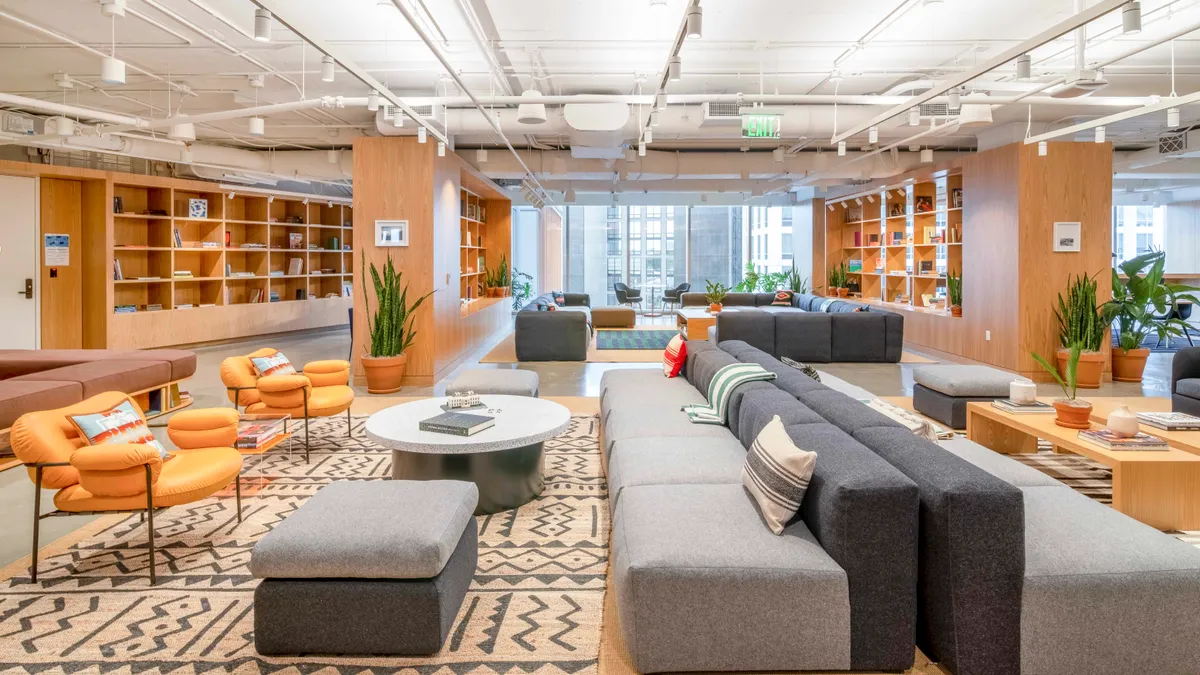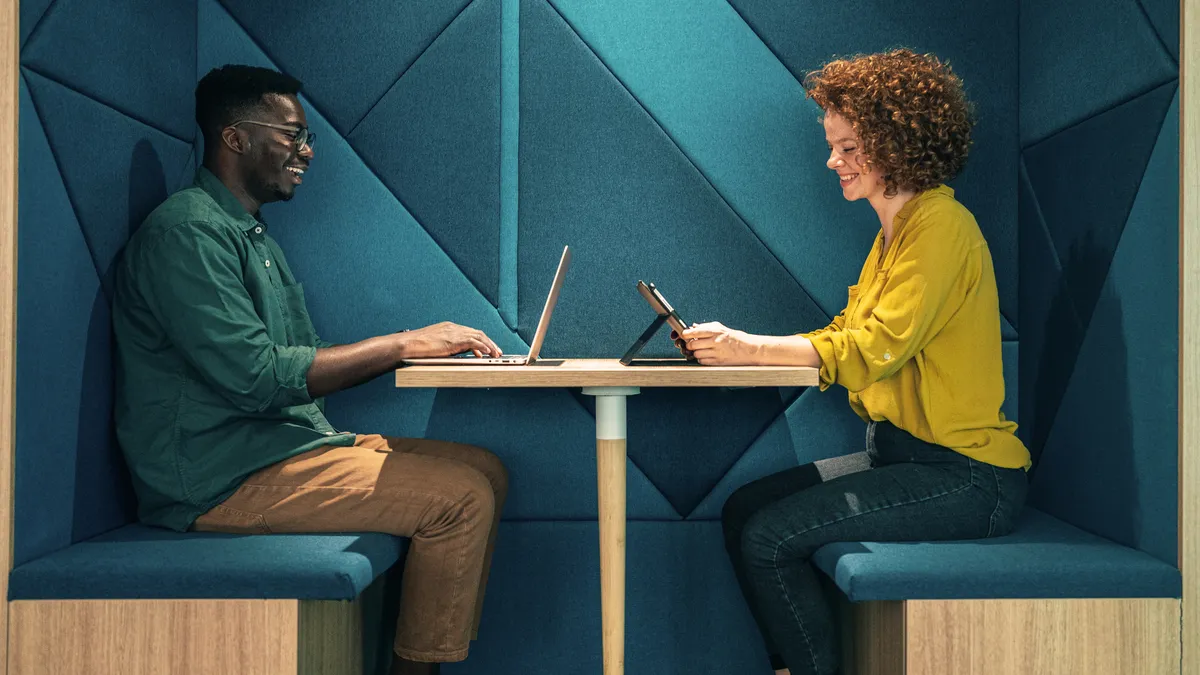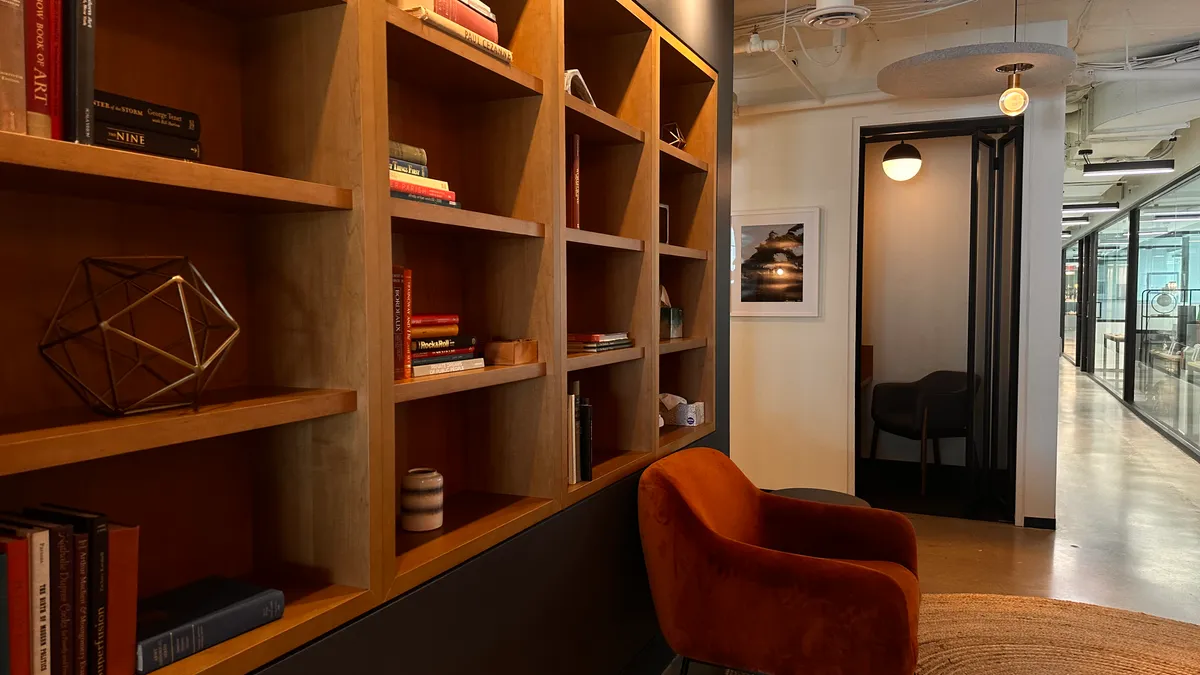Editor’s Note: This article is an installment in Caroline Colvin’s Office Space series, where they examine the future of work through the lens of “office space” — and whether pursuing a physical workplace is even worth it anymore.
As HR knows, workers’ wants and needs — both voiced and unarticulated — are constantly evolving. The return to the office is another layer added onto the landscape, with 9 in 10 employers planning to implement RTO policies by 2024, per an August 2023 ResumeBuilder report. How can HR provide an ideal (hybrid) office environment when the future of work is ever-evolving?
A remote work pulse report from Owl Labs, a videoconferencing company, indicated yes, remote workers benefit from the freedom of not being mandated to come into the office.
Whereas 57% of survey-takers said that working independently remotely is more productive, only 30% reported the same regarding the office. About half of workers said they think more creatively when remote. In turn, 49% said they focus better while remote, compared to 39% who do so better in an office setting.
But the study also revealed that knowledge workers really do value the benefits of communing with co-workers: 60% of survey-takers said they like to meet new colleagues in the office, compared to 17% who said they preferred to do so remotely.
About half preferred team meetings in real life, compared to a quarter who said they preferred virtual meetings. (Survey-takers also preferred in-person collaboration to remote collaboration in similar numbers.)
So how does HR balance these mixed desires and messages?
Communication is the secret sauce
In a public statement on the mixed-bag remote work findings, Frank Weishaupt, CEO of Owl Labs, noted that “when it comes to work environments, there’s no one-size-fits-all option that satisfies all employees, which is why hybrid work is the future.” This sentiment mirrors that of Abraham Gonzales-Pollick, Vensure Employer Services’ vice president of client development.
Acknowledging the necessity of on-site work for some industries, Gonzales-Pollick’s advice for HR is to collaborate with employees on what RTO looks like at their organization.
Instead of exit interviews, drill down on “stay interviews.” He recommended open communication at every step of the way: from the recruiting process, to onboarding, to performance management, to training and development, Gonzales-Pollick said.
“They're experiencing all of these things throughout that whole lifecycle. It would be really great to hear from the employees on what they need in that moment,” he said. Maybe an organization needs more flexibility or better pay, he continued. “Maybe the organization needs more fun activities. Maybe the employees need a little bonus. Who knows, right?” Gonzales-Pollick told HR Dive. “Every organization is different. Every industry is different.”
Regarding RTO, Jakada Imani said that most of his clients are “wading into it pretty thoughtfully.” As CEO of The Management Center, an inclusion- and equity-focused leadership consulting firm, Imani has a bird’s eye view of the hybrid work landscape.
Many employers understand the gravity of re-integrating workers into a physical workplace. He also noted that the best intentions can be foiled with a careless approach.
Why that secret sauce is important
“That's a lot of the mistakes major companies make — when they're not actually talking to their teams,” Imani told HR Dive. “They're not having a conversation about what the preferences of folks are, why those preferences are that way, what the needs of the work are, and how to track and focus on the needs of the work.”
Along with future workflow and hybrid dynamics, conversations about how RTO is “going to impact different staff disproportionately” should also take place, Imani said. For example, many Black people prefer to work from home, as remote work offers a reprieve from in-person racism. (Previously, an executive at a recruitment company spoke to HR Dive about how remote work is a racial equity issue.)
Research firm McKinsey and Company, among others, has kept a close eye on women in the workplace and published annual insights therein. “What we know is that particularly women, mothers and caretakers really favored remote work because it allows them to be more active caretakers and less stretched with commute times,” Imani said.
How HR can make the office a desirable place
Beyond compliance — all HR experts interviewed for the Office Space series brought up the importance of lactation rooms for breastfeeding or “chestfeeding” — employers need to “convince” employees to come back to the office, as a previous expert stated. A regional lead for a coworking company, they described their spaces are designed intentionally: private spaces such as “focus” rooms and collaborative open spaces, “soft seating” in common areas and so on.
Gonzales-Pollick touched on the physical space element, saying, “We should be thinking about the spaces and how we evoke the senses, beyond just practical. People need more than just a desk and a phone and their monitors, right?”
“All that is practical, but when we put focus on the design and emotional aspect of the workspace, we are influencing moods, behaviors, attitudes. It’s those things that impact performance,” he continued. “You may not even think about it, but lighting makes a difference. Plants at your desk, photos and collaboration spaces.”
Colors matter, Gonzales-Pollick added. An example he gave was the company break room. If the “walls haven't been painted in 10 or 20 years” and bosses mandate RTO because employees are “going to perform better” in the office, the logic falls flat. It probably won’t compete with the windows, bright colors and comfortable chairs of someone’s WFH set-up, he explained.
HR needs an IRL engagement plan
Gonzales-Pollick also stressed the importance of daily engagement activities or what he called “power hours.” He also built on the idea of employee resource groups. “We think about these new and meaningful ways of diversity, equity, inclusion and belonging, but belonging sometimes gets missed,” he said.
He floated the idea of belonging groups to “give people something to look forward to,” so they can say “I belong here. And if I'm not coming to work, I'm going to miss out because I get a lot out of these belonging groups.”
“We wish that every workplace environment was highly supportive, highly connected. And what we know is that's not true. [We know] that a lot of workplace environments are dysfunctional at best and toxic at worst,” Imani said. “So if you're going to have people come together to build connection and camaraderie, you actually have to build that in.”
Imani even brought the old-school concept of “icebreakers.”
“Those things, in fact, do work, because they build trust, they build connection, they build knowledge of each other,” he said, laying the groundwork for a “virtuous cycle.”
In turn, he said, “Coming in with me sitting in my cubicle and you sitting in your cubicle doesn't actually build camaraderie. When we don't know each other's names, you don't know what each other does, and we don't have any particular sort of projects or work together: surprise! That's not going to build really deep connection.”
Both experts suggested that people teams plan engagement activities during the work day, particularly to be mindful of caregivers’ time. Beyond happy hour, employers can bring in speakers and hold breakout sessions afterward, pairing employees with people they don’t work with on a daily basis. Imani also suggested lunch conversation groups; simple prompts can be effective here.
Spitballing, Imani offered three prompts:
- What’s something you love to do outside of work?
- What do you really love about your job?
- What is one thing you’re looking forward to over the next 12 months?
“There's so many things that [managers] can do,” Gonzales-Pollick said. “They just need to give themselves permission as leaders to have that creative license to try things.”
Many leaders have bemoaned the lack of “serendipitous” hallway moments when transitioning their workforce from WFH arrangements into the office. But Imani arguably pushes back on that thought process. Intentional engagement events are what actually give people an opportunity to know their co-workers.
“It is a little bit ‘forced,’ but so is coming back to work,” he said. “So let's build in some of those opportunities for connection that are not just random. Because if I run into you in the hallway, I'm just going to say ‘excuse me’ and keep going.”

















